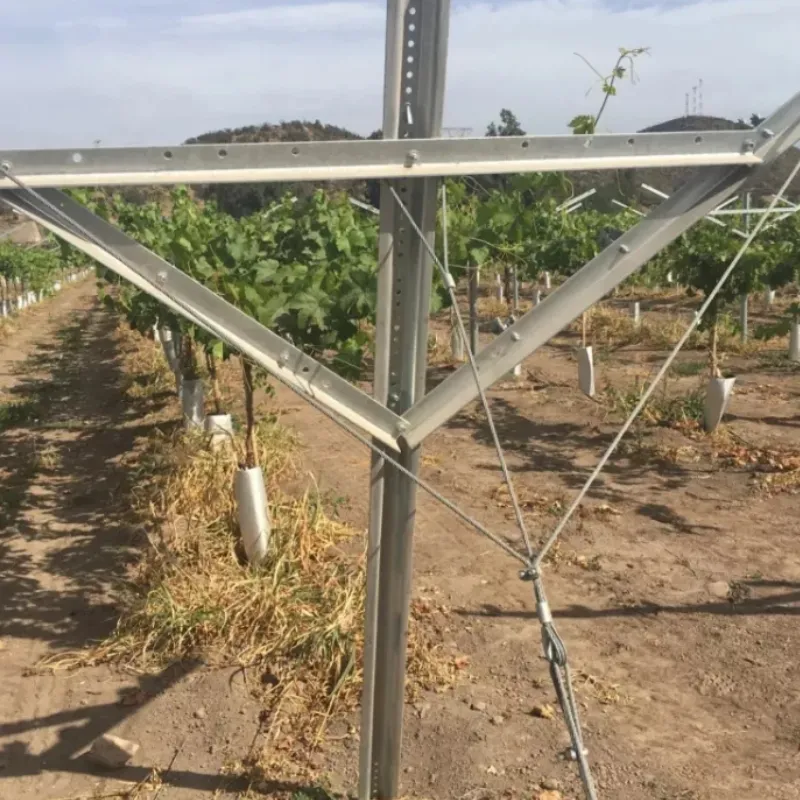
- Afrikaans
- Albanian
- Arabic
- Armenian
- Azerbaijani
- Basque
- Belarusian
- Bengali
- Bosnian
- Bulgarian
- Croatian
- Czech
- Danish
- Dutch
- English
- Esperanto
- Estonian
- Finnish
- French
- Galician
- Georgian
- German
- Greek
- hawaiian
- Hindi
- Hungarian
- Indonesian
- irish
- Italian
- Lao
- Latvian
- Lithuanian
- Luxembourgish
- Macedonian
- Maltese
- Myanmar
- Norwegian
- Polish
- Portuguese
- Romanian
- Russian
- Serbian
- Slovak
- Somali
- Spanish
- Swedish
- Thai
- Turkish
- Turkmen
- Vietnamese
Dic . 11, 2024 18:19 Back to list
cattle yard fencing
Cattle Yard Fencing Essential Elements for Successful Livestock Management
Cattle farming is an essential aspect of agriculture that requires careful planning and execution to ensure the safety and health of both livestock and farmers. Among the many components of cattle management, fencing plays a crucial role. Proper fencing not only defines the boundaries of the farm but also protects the cattle from predators and prevents them from straying onto roads or neighboring properties. In this article, we will discuss the importance of cattle yard fencing and examine the various types of fencing materials, designs, and considerations that farmers must keep in mind.
Importance of Cattle Yard Fencing
Cattle yard fencing serves several vital functions. Firstly, it acts as a physical barrier that keeps cattle contained within a designated area. This is essential for herd management, as it allows farmers to monitor their livestock easily and ensures they do not wander into dangerous areas, such as busy roads or into the property of neighbors.
Moreover, effective fencing protects cattle from external threats, such as wildlife and stray dogs, which may pose a risk to their safety. It also helps prevent theft and unauthorized access to the property, which is a growing concern in many rural areas. Furthermore, good fencing can contribute to better pasture management by allowing farmers to control grazing patterns, rotate pastures, and protect specific areas from overgrazing.
Types of Fencing Materials
When it comes to cattle yard fencing, there are various materials available, each with its pros and cons
. Some of the most common types include1. Barbed Wire Fencing This traditional option consists of strands of wire with barbs that deter cattle from pushing against the fence. Barbed wire is cost-effective and relatively easy to install, making it a popular choice among many farmers. However, it can cause injuries to livestock if they come into contact with the sharp barbs, so it may not be suitable for all situations.
2. Electric Fencing Electric fencing is becoming increasingly popular among cattle farmers due to its effectiveness in containing livestock. It operates by delivering a mild electric shock to animals that touch the wire, teaching them to stay away from the boundary. Electric fences are versatile, easy to set up, and can cover large areas without the need for solid barriers. Nevertheless, they require a power source and maintenance to ensure they function correctly.
3. Wooden Fencing Wooden fences provide a sturdy and visually appealing option for cattle yards. They are durable and can withstand harsh weather conditions, making them a long-term investment. However, wooden fencing can be costly and requires regular maintenance to prevent rot or damage from insects.
cattle yard fencing

4. Vinyl Fencing Offering an attractive alternative, vinyl fencing is low-maintenance and resistant to the elements. It also does not splinter or rust like other materials. While it can be more expensive upfront, its longevity can make it a cost-effective choice in the long run.
Design Considerations
When planning cattle yard fencing, several design considerations must be taken into account.
- Height and Spacing Cattle are strong animals, and a fence must be tall enough to prevent them from jumping or pushing down. Generally, a height of 5 feet is recommended for standard cattle. Additionally, the spacing between fence posts should be appropriate to ensure that the fence can withstand the pressure exerted by the animals.
- Visibility Fences should be visible to cattle to prevent them from inadvertently running into them. Bright colors or reflective tape can help increase visibility, particularly in low-light conditions.
- Gate Placement Properly placing gates is essential for easy access to cattle yards without compromising security. Gates should be wide enough to accommodate equipment and livestock movement while being sturdy enough to withstand cattle pressure.
- Maintenance Regular maintenance is crucial for the longevity and effectiveness of cattle yard fencing. Farmers should inspect fences frequently for damage, rust, or instability and address any issues promptly.
Conclusion
In summary, cattle yard fencing is a fundamental aspect of effective livestock management. By choosing the right materials and designs, farmers can create a safe and secure environment for their cattle while also protecting their property from potential threats. Investing time and resources into proper fencing can lead to healthier livestock, reduced operational challenges, and ultimately, a more profitable farming venture.
-
Versatile Sheep and Livestock Hurdles for Sale
NewsApr.14,2025
-
The Rise of BRC Fencing
NewsApr.14,2025
-
High-Quality Cattle and Horse Panels for Sale
NewsApr.14,2025
-
Durable Cattle Fencing Solutions
NewsApr.14,2025
-
Double Wire Fencing Solutions
NewsApr.14,2025
-
360 Degree Protection with 358 Anti-Climb Fences
NewsApr.14,2025









